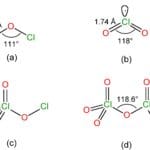This guide explores QR Decomposition, a powerful tool for simplifying complex matrix operations. We’ll cover the fundamentals, delve into how QR Decomposition calculators work, and explore real-world applications. Let’s unlock the power of matrix factorization!
Understanding QR Decomposition
QR Decomposition, also known as QR factorization, is a fundamental technique in linear algebra. It involves decomposing a given matrix, denoted as A, into the product of two specific matrices: Q and R. These matrices possess unique properties that simplify various calculations.
- Q: An orthogonal matrix. In a square matrix, this means its columns are orthonormal – mutually perpendicular and each having a “length” (norm) of 1. For rectangular matrices (m x n where m ≥ n), Q is semi-orthogonal, meaning its columns are still orthonormal. This orthogonality is crucial for simplifying calculations.
- R: An upper triangular matrix. This implies that all entries below the main diagonal (the diagonal from the top left to the bottom right) are zero. This structured format facilitates efficient computations.
This decomposition, A = QR, offers a “shortcut” for complex matrix operations, transforming intricate calculations into more manageable steps. For a quick refresher on square roots, our racine carree calculator can be helpful.
Why Use QR Decomposition?
QR Decomposition is invaluable for several reasons:
- Simplifying Matrix Operations: It transforms complex matrices into simpler forms, making calculations easier.
- Solving Linear Systems: It provides a stable and efficient method for solving systems of linear equations, particularly overdetermined systems (more equations than unknowns).
- Least Squares Problems: It finds the “best fit” solution when a perfect solution doesn’t exist, minimizing the error between the model and the data.
- Eigenvalue Computation: It plays a crucial role in algorithms like the QR algorithm for determining eigenvalues and eigenvectors.
- Machine Learning: It’s used in dimensionality reduction (like Principal Component Analysis), data analysis, and model training.
Calculating QR Decomposition
Several methods exist for computing QR Decomposition, each with its own advantages and disadvantages:
Gram-Schmidt Orthogonalization
This method iteratively constructs the Q matrix by orthogonalizing the columns of A. It’s like arranging a cluttered room one item at a time. While conceptually straightforward, Gram-Schmidt can be numerically unstable for some matrices, meaning small errors can accumulate and affect the accuracy of the result.
Householder Transformations
This method utilizes reflections to introduce zeros below the diagonal of A, effectively constructing R. It’s more numerically stable than Gram-Schmidt, making it a preferred choice for many applications. However, it can be computationally more intensive.
Givens Rotations
Givens rotations use rotations to selectively zero out elements below the diagonal. They’re particularly suitable for sparse matrices (matrices with many zero entries) due to their ability to target specific elements. However, they can be less efficient than other methods for dense matrices.
Here’s a comparison table:
| Method | Description | Advantages | Disadvantages |
|---|---|---|---|
| Gram-Schmidt | Orthogonalizes vectors sequentially. | Relatively simple to understand. | Can be numerically unstable for some matrices. |
| Householder Reflections | Uses reflections to introduce zeros in the matrix. | Generally more stable than Gram-Schmidt. | Can be more computationally intensive. |
| Givens Rotations | Uses rotations to selectively introduce zeros. | Very stable and suitable for sparse matrices. | Can be slower for dense matrices. |
Ongoing research continually refines these and other algorithms, exploring their efficiency and accuracy under different conditions. The optimal method often depends on the specific problem and the characteristics of the matrix.
Applications of QR Decomposition
Solving Linear Least Squares
In real-world scenarios, systems of equations often have more equations than unknowns. QR Decomposition helps find the “best fit” solution in these overdetermined systems, minimizing the sum of squared errors. This is crucial in fields like statistics and data analysis.
Eigenvalue Computation
Eigenvalues and eigenvectors reveal crucial information about a matrix’s behavior. The QR algorithm leverages QR Decomposition to iteratively compute these values, contributing to applications like structural analysis and control systems.
Machine Learning
QR Decomposition is a vital tool in machine learning. It simplifies complex data, enabling algorithms to learn patterns more effectively. For instance, in Principal Component Analysis (PCA), QR Decomposition helps reduce the dimensionality of data while preserving important information. This simplifies analysis and improves the efficiency of machine learning models.
Using QR Decomposition Calculators
Online Calculators
Several online QR Decomposition calculators automate the decomposition process, saving you time and effort:
- eMathHelp: Offers step-by-step solutions.
- Omni Calculator: Provides a user-friendly interface.
- PureCalculators: Supports different matrix sizes.
- Symbolab: Offers detailed explanations.
- Wolfram|Alpha: Handles complex computations and visualizes results.
These calculators provide a convenient way to perform QR Decomposition, especially for educational purposes or quick calculations.
Software Libraries
For programmatic calculations within a specific programming language, libraries like NumPy in Python provide optimized functions for QR Decomposition. These libraries offer greater flexibility and control over the computation process.
Example Calculation
Let’s consider the matrix A:
A = [[1, 2],
[3, 4]]
Using an online QR Decomposition calculator like Wolfram|Alpha, you can easily find its decomposition:
- Q: (Output will vary slightly depending on the calculator and method used)
- R: (Output will vary slightly depending on the calculator and method used)
This decomposition simplifies further computations involving A. For a complex example using the Gram-Schmidt method, you can refer to resources like AtoZmath.com, which provide step-by-step solutions for larger matrices.
Future Directions
Ongoing research in numerical linear algebra continuously explores new algorithms and refinements for QR Decomposition. This research focuses on improving efficiency, numerical stability, and adapting the technique to specialized applications. For quick recall of complex sequences, tools like our mnemonic device for cranial nerves dirty showcase innovative memory aids. While current methods are robust, future developments may unlock even more powerful and versatile applications of QR Decomposition.
- China II Review: Delicious Food & Speedy Service - April 17, 2025
- Understand Virginia’s Flag: History & Debate - April 17, 2025
- Explore Long Island’s Map: Unique Regions & Insights - April 17, 2025
















